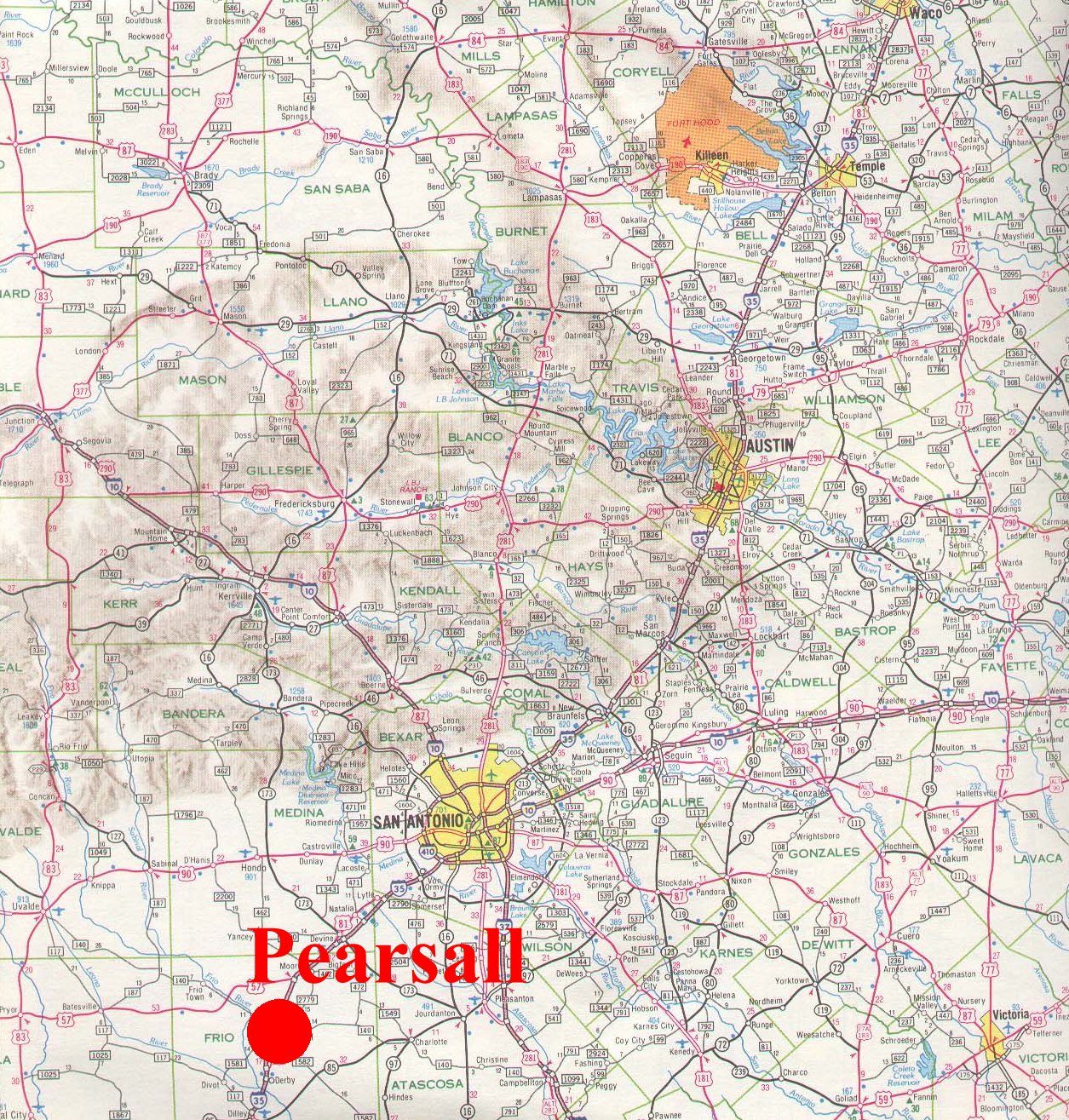

| Joshua Flores and Margaret De Leon | Fall 2000 |
| History 1302 | Hines |
Click on map to see larger view.





Bibliography
1. Bradfield,Bill.(1999). Muleshoe and More. Houston, Tx: Gulf Publishing Company. Bradfield was very blunt and straight forward about his information.
2. Webb, Walter.(1952). The handbook of Texas. Austin, Tx: The Texas State Historical Association. Webb site had everything I needed to know.
3. Kelton,Ann.(1996). Texas Travel. Austin, Tx: The Whitley Co.
It didn't have any thing4. Webb, Walter.(1996). The Handbook of Texas Vol.5. Austin,Tx: The Texas State Historical Assocation. This webb site was very helpful.
5. Interview: Salazar, Sylvia. (10-10-2000). Pearsall,TX. Very helpful.
6. Interview: Salazar, Annette. (10-10-2000) Pearsall,TX: Very helpful.